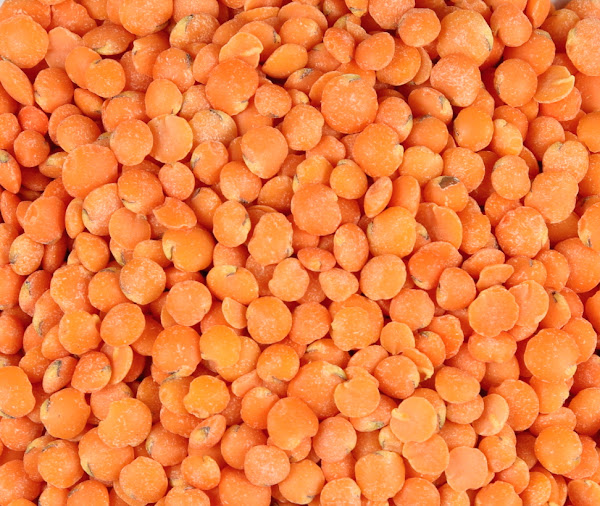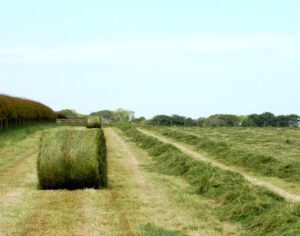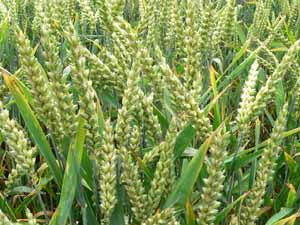Growing lentil commercially (masoor cultivation) is very popular in many countries around the world, and it is one of the most important protein rich pulse crop.
It is most commonly eaten as Dal in India, by splitting into 2 cotyledons, deep orange red or orange yellow in color.
The lentil (Lens culinaris) is actually an edible legume, and it is very important in South Asian cuisine.
It is a bushy annual plant, and mainly known for it’s lens-shaped seeds. The plants are about 16 inches (40 cm) tall, and the seeds grow in pods (usually with two seeds in each pod).
The split lentils (often with their hulls removed) are often known as Dal, and very popular and used widely in South Asian Countries.
And the dal is generally eaten with rice or rothis. And the lentil is a dietary staple throughout regions of Bangladesh, India, Sri Lanka, Nepal and Pakistan.
Whole grain is also used in various dishes, and it also provide a source of starch for textiles and printing.
And it is also sometimes mixed with wheat flour in bread and cake production. As a food crop, the majority of the world production of lentil comes from Canada, India and Australia.
Origins
According to Wikipedia, the origins of lentils are in the Near East and Central Asia. It is the oldest pulse crop known, and among the earliest crops domesticated in the Old World (having been found as carbonized remains alongside human habitations dating to 11,000 BCE in Greece.
Other Names of Lentil
The lentil is known by many different names in different parts of the world. It is also known as Lentils or Red Lentils in English, Adas in Arabic, Mercimek in Turkish, Messer in Amharic and Hiramame in Japanese. It is also known by different local names in India in many different languages. It is known as Masoor in Hindi and Gujarati, Mosur dail in Assamese, Moshur dal or Mushuri dal in Bengali, Kempu Togari in Kannada, Parippu in Malayalam, Masur in Marathi, Masoora dail in Oriya, Masri or Peeli in Punjabi, Mysore parippu in Sinhala, Mysore Paruppu in Tamil, Erra Kandi Pappu or Erra Kandulu in Telugu and Mosur daal in Konkani.
How to Start Growing Lentils
Growing lentil is not difficult. You can easily start growing lentil in both small scale and commercial scale, even if you are a beginner.
Here we are describing everything about growing lentil from planting, caring to harvesting.

Select a Location
First of all, select a good location for growing lentil. The lentil plants grow well in well-drained, fertile soil with the availability of full sun.
Prepare the Soil
The lentil plants can be grown in almost all types of soil. But avoid saline, alkaline or waterlogged soil.
The lentil plants are able to grow in various soil types from sand to clay loam.
But they generally grow best in deep sandy loam soils with medium to good fertility. And the soil pH level around 7 is best for growing lentil.
For preparing the soil, till the soil perfectly and mix the organic fertilizers into it. But for commercial production, one deep ploughing is required followed by 3-4 cross harrowing.
You should add any organic or chemical fertilizers during this stage. For commercial production, add 10-12 kg urea and 40-50 kg super phosphate per acre. And then level the soil perfectly.
Climate Requirements for Growing Lentil
Required climatic conditions for growing lentil can vary from place to place (across different growing regions).
The lentils are panted in the winter and spring under low temperatures in the temperate climates.
But the lentils are planted under relatively high temperatures in the subtropics at the end of the rainy season.
Best Time for Growing Lentil
Mid of the October to the first week of November is generally considered as best time for growing lentil.
Choose a Variety
There are many different varieties of lentils available to choose from. In India, some known and widely cultivated lentil varieties are Bombay 18, DPL 15, DPL 62, L 4632, K 75, LL 699, LL 931 and Pusa 4076. You can choose any breed above depending on it’s availability in your area.
Purchase Seeds
The lentil seeds should be easily available in your local market, because it is a very popular crop. Try to purchase good quality fresh seeds from trusted suppliers.
Seeds per Acre
12-15 kg of seeds per acre will be enough.
Planting
The lentil seeds should be planted in rows. After leveling the soil, mark several rows depending on the type of your soil.
Space the rows to about 8-10 inches apart and sow the seeds to about 2-3 inches apart. The sowing depth of the seeds should be at least 1-1.5 inches.
Treat the seeds with Captan or Thiram at the rate of 3 gram per kg of seed before sowing. A light irrigation after sowing the seeds will help the seeds to germinate faster.
Caring
The lentil plants generally require less care. Although taking additional care will be very helpful for the growth of the plants and it will ultimately increase total yield.
Here we are describing more about the additional caring steps for growing lentil.
Fertilizing: The lentil plants will not require additional fertilizing if you have already prepared the soil by following the methods mentioned above.
Watering: In most areas, the lentil is grown as a rainfed crop. But depending upon the climatic conditions, the plant requires 2-3 irrigation in case of irrigated conditions. First irrigation should be provided 4 weeks after sowing the seeds, and second one at flowering or pod formation stage.
Mulching: Mulching will help to reduce weeds from the garden and it will also helps to retain moisture into the soil. So, mulch the field, and use organic content for mulching.
Controlling Weeds: Controlling weeds is very important, because weeds consume most of the nutrients from the soil. You should remove the weeds while preparing the soil, and then remove additional weeds 4-5 weeks after planting the seeds.

Pests and Diseases
The lentil plants are susceptible to some common pests and diseases. Please contact your nearest agriculture extension office for having good recommendation for controlling all the pests and diseases.
Harvesting
Timely harvesting is very important. You can expect to harvest when the plants dry up and the pods mature.
Avoid over-ripening of the pods, because most of the seeds will fall of the over-ripened pods.
After harvesting the plants, beat them by stick to thresh, or use machine for commercial production. And after threshing, clean the seeds and dry them in sun.
Lentil Nutrition
The lentils are great source of protein and some other necessary nutrients. Raw lentils are 1% fat, 25% protein, 11% dietary fiber, 8% water and 63% carbohydrates.
It is also a great source of essential nutrients such as folate, thiamin, pantothenic acid, vitamin B6, phosphorus, iron and zinc. The lentil is called as ‘poor man’s meat’ in some South Asian countries.
These are the common ways for Masur/Masoor farming. Hope you have enjoyed this guide! Good luck!







Hello,
I would like to film a masoor dal farm, to understand the process of how it is grown and harvested, packed and sold. Is there a way by which you could point me in the right direction? Which field can I go to? In and around Uttar Pradesh